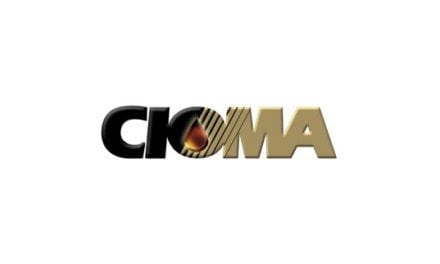Technology alone cannot create transformation within a business.
By Joseph Kratochvil
Over the past nine months, supply chain pressures have been building, and nearly every business vertical has been affected. Everyone recognizes the situation has evolved, regardless of political affiliation, root cause identification or environmental conservation or energy independence position. The global economy is in flux, presenting unprecedented challenges sourcing supply, moving supply to manufacturers and delivering finished product to consumers.
The energy supply chain and corresponding energy distributors are the beginning (and often the end) of the supply chain for nearly every business. The downstream energy distribution industry is the life blood of the economy. When our industry struggles to find supply or deliver product it resonates in every business sector and household across the country.
Recently, I visited with a well-known and successful energy distribution executive for one of the largest energy distributors in the United States. This executive has often been my sounding board, and what I learned from him was surprising.
The biggest operational challenge to this national, multibillion gallon a year distributor is not supply chain centric or external in nature. The company has consistently grown year over year via traditional organic revenue farming and the larger dynamic growth fueled by significant acquisitions. This growth has generated many benefits but also unique challenges.
What this team identified as they worked through market-induced issues were a series of organizational inadequacies and process driven inconsistencies between technologies, processes and states of technology implementation. Every geographic location managed logistics and supply differently using different technology sets. Each location struggled to utilize technology to reliably source and deliver product from terminal to end clients across the enterprise. While these challenges are exacerbated by high-velocity strategic growth, the core issues he and his team are solving for have plagued downstream energy marketers of all sizes for years.
What owners, business unit leaders and logistics groups have clamored for is a reliable, purpose-built technology platform, intentionally and intelligently implemented. They want it to drive business case specific processes from the top down throughout the enterprise to ensure replaceable success sourcing, procuring and distributing reliable supply for commercial and consumer clients. They need visibility to verifiable metrics mined from a single source of truth, encompassing the entire business, and focused through a supply and distribution operational lens and socialized to key leaders and teams allowing them to steer the business. This is the technology they believe will change their reactionary businesses into agile, proactive enterprises.
I would suggest this is not the answer, but the outline for a technology-based, process-powered toolset to enable the solution.
Technology alone cannot create transformation within a business. The industry understands the challenges around, and the need for, efficient logistics and rolling asset management. The need to optimize assets and reduce rolling risk is a strategic initiative for many of our clients. Businesses within this sector realize changes need to be made. Where our industry (even some of the largest businesses in this space) fail, is understanding the function that powerful technologies have for the companies that deploy them. Technology only does what we tell it to do. If we deploy advanced logistics systems to operate the business using the same methodologies and processes of 20 years ago, we are not going to create the ability to solve the challenges of today or scale for the opportunities of tomorrow. We will have found a way to replicate current issues in a faster way.
Fortunately, my visit with this thought leader and his team was refreshing. Instead of looking to technology as a solution, he and his business unit leaders identified standardized process and process development as the key to their corporate success. They want to develop a business process review initiative for every process across every business segment of their enterprise landscape to evaluate, refine and re-tool the entire transactional flow from order entry to customer-facing delivery. Their goal is to create consistent success through highly visible, replaceable and easily trainable processes and re-tool their technology portfolio to facilitate this effort. They are transitioning away from viewing technology as an organizational “solution” and pivoting to utilizing tech as a tool to enable the business. They understand the significance of this project.
Buying and turning on new technology to try and solve problems is significantly easier than evaluating, challenging assumptions and substantively changing HOW they operationally do business and serve customers. This new approach is centered on the people working across their organization and employs continuous process improvement as the pivot point for their success and scalable growth. This concept is the definition of transformational. It has potential to create true service differentiators for customers in terms of SLAs, smooth out supply chain disruptions and allocation issues via transparent, proactive metrics and forecasting and generate increased margin captures through efficiencies and ease of culture, technology and process adoption through acquisitions.
What I heard from this team was excitement and a general enthusiasm from an organization to meet challenges in a different way. This kind of entrepreneurial, adventurous solutions-oriented approach is infectious. I certainly hope it catches on!
 Joseph Kratochvil is the CEO of WEnd Consulting. Serving coast to coast, WEnd is bringing years of consulting experience to marketers around the country who are looking to improve processes, implement software and update their technology in the fast-paced environment.
Joseph Kratochvil is the CEO of WEnd Consulting. Serving coast to coast, WEnd is bringing years of consulting experience to marketers around the country who are looking to improve processes, implement software and update their technology in the fast-paced environment.








